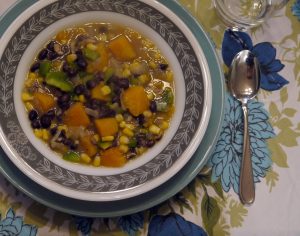If somewhere were to ask me at the beginning of semester what I thought leadership meant, I would have naively said that it means a person who takes control and guides others in group projects, or a boss simply exercising authority over his or her employees. However, because of my time in LDR 101, if someone were to ask me now what I think leadership means, I would provide an entirely different answer. A leader is not one who talks the loudest or rules with an iron fist. A leader is someone who sets an example for people through their own actions or their own character. Can someone really be labelled a good leader if those that they are leading only follow said leader out of fear? The definition of the word “lead” is also rather ambiguous in this context. Leadership comes in many different forms. I do not think of it as someone dictating orders to a group of people, but rather inspiring a group of people to complete great deeds of their own accord.
In my LDR section, we took a look at many exemplum in Roman history whom we could label as either positive or negative leaders. We often found that leadership presented itself in this figures in different ways. For example, we had great figures like Horatius Cocles, who saved Rome by destroying the bridge to Rome as the enemy encroached on the border, and fell fully armored into the Tiber river, only to appear on shore as a victorious hero. He was a great leader because he put the commonwealth of the Roman people before his own wellbeing, and his selfless act inspired many soldiers to follow his lead and put the Republic before themselves. We also studied more imitable leaders such as Cornelia Gracchus who convinced people far and wide that it is possible to be a strong leader within your own home, and that being a strong woman doesn’t have to entail physical strength used in battle, but it can mean a powerful moral compass that guides one through adversity with grace.
Leadership itself is impossible to teach. No amount of reading William Cronon’s guide to becoming a well-rounded individual can teach someone how to yield their inner strength when the world commands it most from them. However, Cocles and Cornelia, as well as all the other leaders that we have studied this year in LDR 101, still continue to be leaders long after their deaths, for I have personally been inspired by them to better myself. Perhaps through bettering myself based on the example given forth by these exemplary people I can find the strength to lead within myself. So if leadership cannot be taught, what has been taught, and why has it impacted my leadership skills? History was taught, inspiration was gained from that history, and that inspiration can be utilized and made productive by certain young minds who are destined to become this generations great leaders.
Out of all the activities we did in LDR 101 (analyzing Cronon’s essay about leadership and the liberal arts, writing multiple essays, creating a digital portfolio, and giving a presentation analyzing a particular Roman leader), it was discussing the stories of great heroes that I was able to take the most form. All of the other activities taught me how to be a well-rounded student, but discussing and connecting with my peers inspired me the most. Learning from past examples, and finding inspiration in their deeds, is what truly creates new leaders. I am so thankful for the opportunities that this class has given me, for I feel like I have a new outlook on what leadership is, as well as how I can express it through my own actions.
